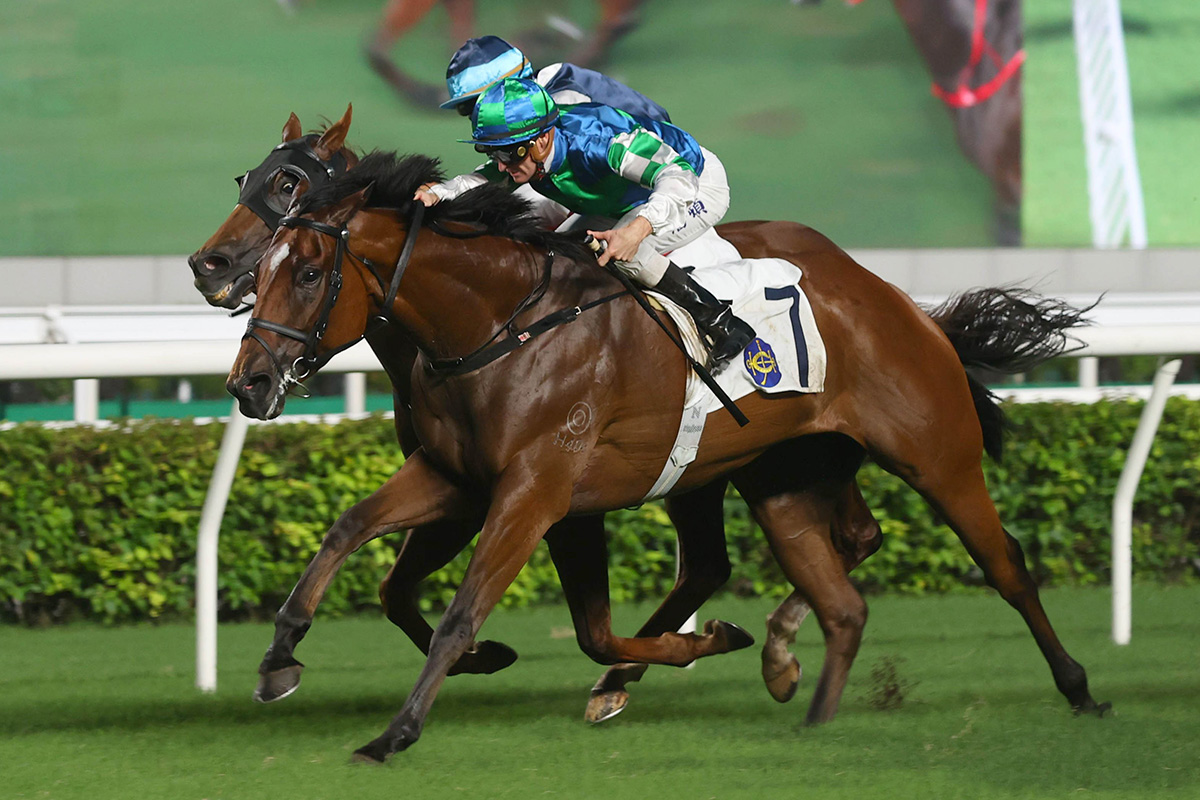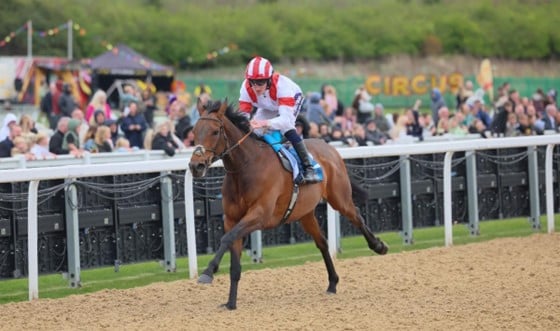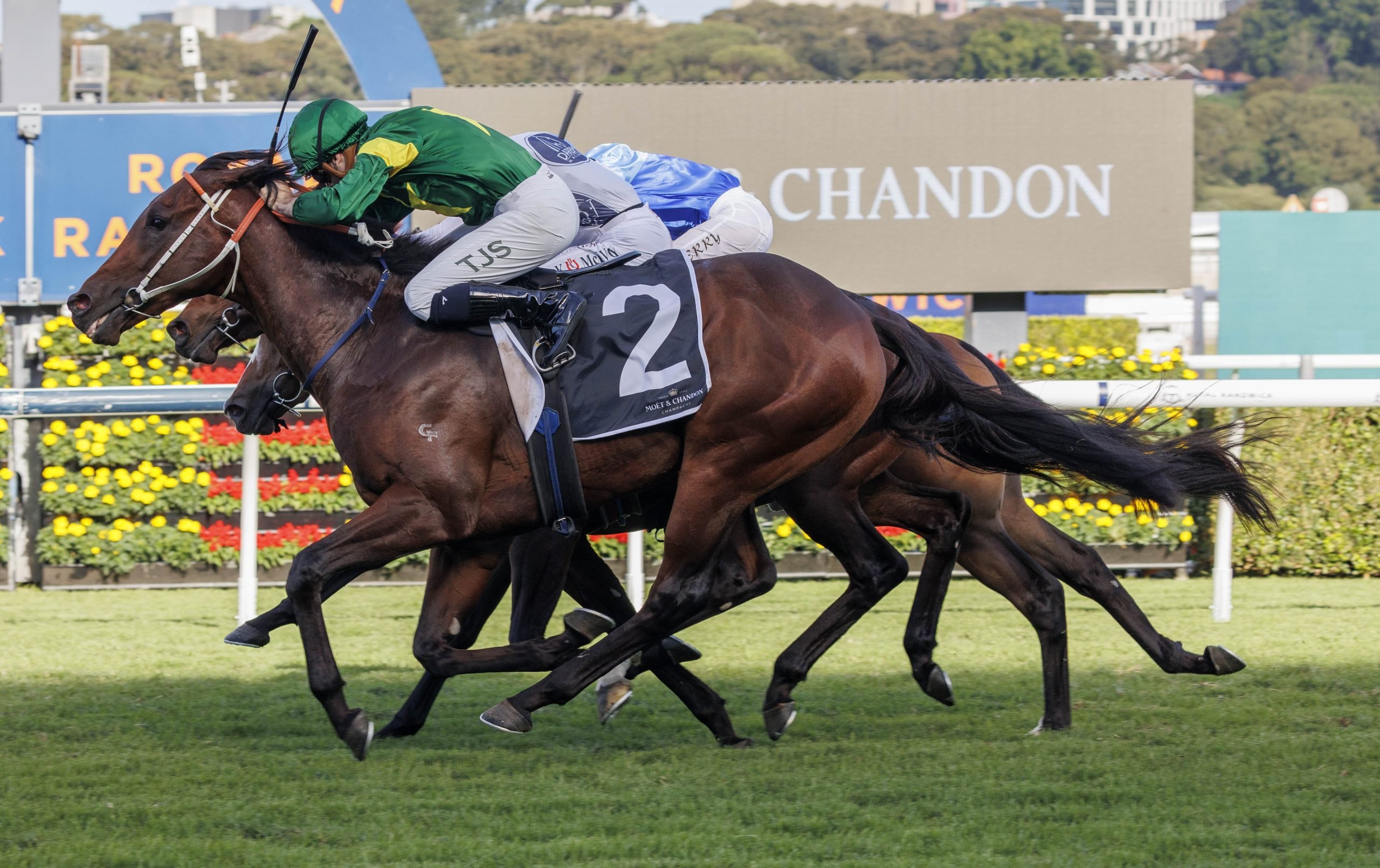The recent treble by Rachel Venniker in KZN brings back memories of the first woman to ride a winner on a SA racecourse – Kathy Kusner.
She rode at a meeting at Turffontein.
To make sure she had a winner on the day they put her on Full Go a horse trained by J.F. Coetzee. He looked a good thing and won easily.

Stewart Ramsay writes in the Sporting Post Mailbag that she then turned that into a double when leading all the way she won on a filly called Ten All for Henry Eatwell.
The next weekend she went down to Durban and won on Paddiwax for Hennie Coetzee and in the process broke the Greyville 1000m record
All her wins in SA were in sprints in which she led all the way.
Her secret was that she sat very still and kept horses perfectly balanced – hence they galloped to their maximum ability.
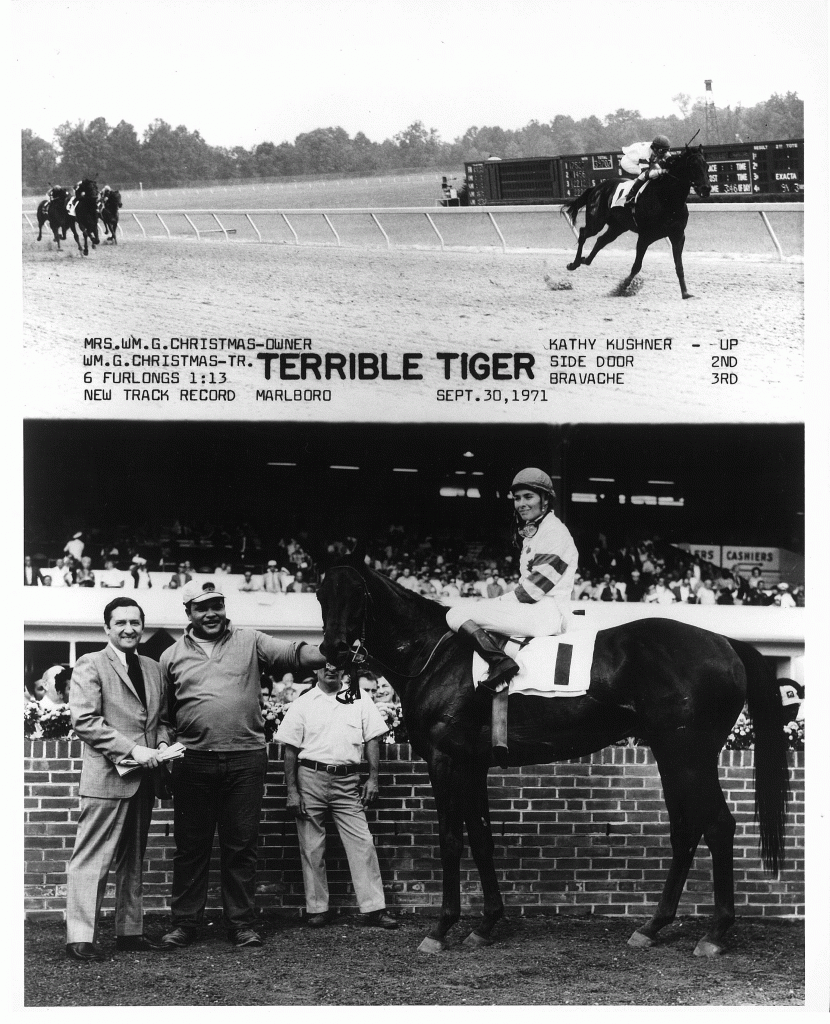
Your readers may be interested in this feature on Kathy Kusner written by Anne Jamieson.
Kathy Kusner has gone where no woman has gone before. Her successful legal case in 1968 allowed her to become the first licensed woman jockey in the United States, opening up the sport, and many other sports, for all other women. Kathy had been racing in unrecognized flat and timber races since she was 16. Not only was she the first in this country, but she became the first licensed female jockey to ride in Mexico, Germany, Chile, Peru, Panama, South Africa, and what was at the time Rhodesia.
She was the first woman to ride in the Maryland Hunt Cup, known as the toughest timber race in the world, with fences reaching 4’10”, and uneven terrain. ABC TV filmed an award-winning documentary about the event.
In addition, Kathy, along with Mary Mairs Chapot, was the first woman to ride in international competition as a member of the United States show jumping team.
Named Horsewoman of the Year before joining the USET at 21, Kathy represented the United States in three Olympic Games: Tokyo in 1964, Mexico City in 1968, and Munich in 1972 (winning a Team Silver Medal there in Show Jumping aboard Fleet Apple, a descendant of Man O’War). In addition she was a Pan American team member at both Sao Paulo in 1963, (winning Team Gold) and Winnipeg in 1967 (winning Team Silver on Untouchable).
Besides her victories as a member of the USET Team, Kathy was a consistent winner and leading rider at major national and international horse shows, and on two occasions was the leading international rider at Madison Square Garden. Some of her numerous victories include the Grand Prix of Dublin (twice), the French Championship, in La Baule, France, the Pre-Olympic Grand Prix of Rotterdam in The Netherlands, the Puissance in Aachen, Germany (twice: one year on Untouchable at 6’10” and the following year on Aberali at 7’2”, and in both cases in deep mud), the Grand Prix of Hickstead in England, the Grand Prix of Wiesbaden and of Wulfrath, both in Germany, the Grand Prix of Ostend in Belgium, and the Grand Prix of Lucerne in Switzerland.
Like many of us, Kathy always loved horses.
As a little kid she would search for horses in fields just so she could go in and pet them.
When she finally got her parents to agree to lessons, she began at the same place that would later train Joe Fargis: Jane Marshall Dillon’s Junior Equitation School in Vienna, Virginia. One of Kathy’s parents would drive her to the barn every weekend, where Kathy would receive lessons in exchange for her stable duty. And by learning to groom and braid, Kathy did whatever she could to be at the horse shows.
Although she and Joe weren’t there at the same time, they are now great friends and Kathy feels “It was a good place for both of us to get started.”
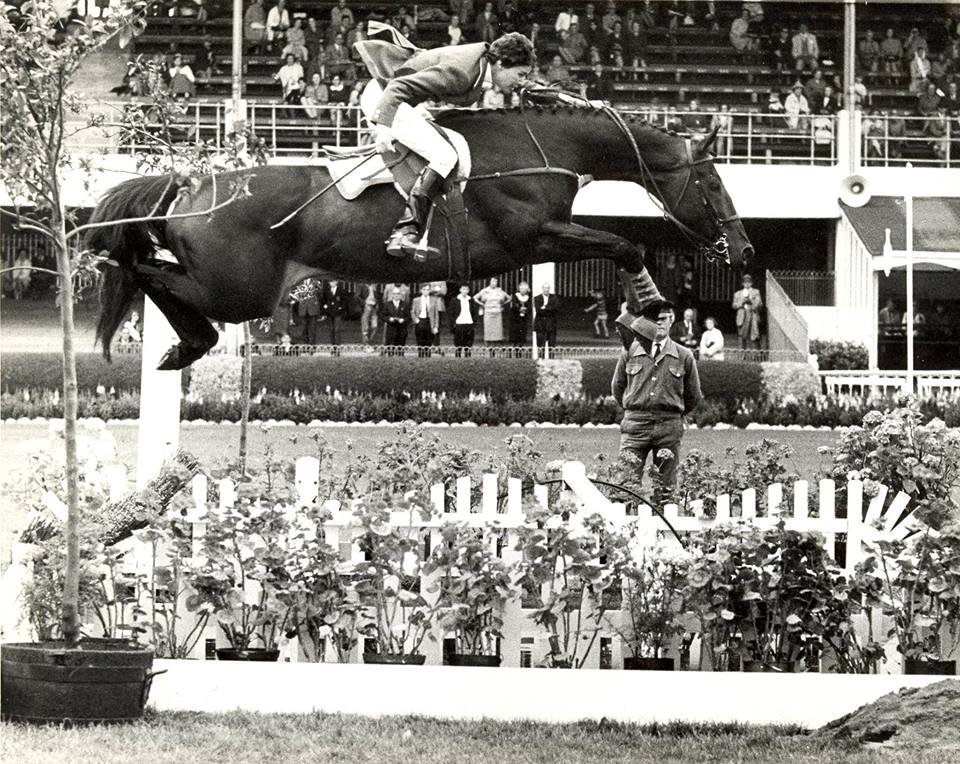
Horse dealers at the shows quickly recognized Kathy’s talent and asked her to ride for them. While Kathy got a foundation at Mrs. Dillon’s, she felt that the School of Equitation was “too safe.” Kathy craved more excitement.
She knew she could find it at the racetrack. A horse show in Culpeper, Virginia, included two days of racing along with their show and Kathy seized the opportunity.
The first race Kathy rode in at Culpeper was a “pony race.” She won the race on a “little bag of fur.” The other pony in the race was a small Thoroughbred type and Kathy tried to get the rider of that horse to switch mounts with her, offering him $1. He declined, so Kathy made the best of it and got all she could out of the “bag of fur.” There was “a lot of flailing involved” to get the pony to run, but Kathy’s persistence paid off with the win.
“I loved racehorses and rode in a lot of unrecognized races. I loved all of that.”
Yet she loved riding jumpers for the dealers as well. Riding for them was “rougher,” more of a challenge. Kathy ended up riding for the “best dealer in the country” at that time, Joe Green. Joe’s horses competed at all the top horse shows.
“He had really good horses, and one was the best horse in the country at the time…the jumper Windsor Castle!” Kathy competed Windsor Castle, and was thrilled to ride such a fantastic horse.
The assignments continued. “The more you rode for people who have good horses, the more people with good horses ask you to ride for them too.
“I love riding that way, you didn’t know what the next day would bring. I rode anything and everything people asked me to ride.” Riding racehorses and jumpers at the same time, Kathy loved every minute of it.
At a show at Culpeper, Kathy was riding jumpers for a dealer named Chuck Ackerman, and one of them was a Thoroughbred named Aniboo. Kathy and Chuck decided to enter him in some races at the next Culpeper show.
“There was one race a day for two days; we entered him in both.” At this bush-league track, “There wasn’t even a starting gate; there was just a place where you lined up and started.”
The Culpeper track was dangerous. Along with roots running right over the track that could send a horse flying, drunk jockeys posed a major threat. “In the first race, a jockey assaulted the starter with a broken bottle; in the second one a jockey threw a brick at him,” Kathy recalls. To avoid the fray, Kathy planned to break on top to stay there as long as possible. It worked; Kathy lived through and won both races.
At the Pimlico Racetrack, Kathy worked approximately 18 horses every morning. Trainers would take them to “The Gap,” where she would be “thrown up on them.” She rode horses which were breezing (running hard for an eighth to a quarter of a mile), and “workers,” which were running fast for half a mile or further.
Although she loved it, what she really wanted was to ride races in the afternoon. She’d been hoping another woman might get her jockey’s license, sparing Kathy the press attention she knew would accompany the first female jockey.
Yet at the time there was no path for a woman to get a jock’s license, and there were people at the track who never wanted it to happen. Even the girls who galloped the horses in the morning didn’t want her to get her license.
In 1964 the Civil Rights Act was passed, and a path appeared.
Kathy was riding in the mornings at Saratoga for the second year, and she thought, at the time, “If I’m going to do it, I better do it now.”
She told her boyfriend, Joe Aitcheson, “the best steeplechase rider in the country, and a great guy,” her plans. Joe suggested Kathy contact his first wife, lawyer Audrey Melbourne, whom Kathy had once met.
Joe said, “Audrey is a very good lawyer. She got me my divorce from my second wife. And she was my first wife.”
Kathy went to Audrey’s office, and told her “I want to get a jock’s license and I realize I need a lawyer. I have $1500 and I’d love to give it all to you if you would be my attorney.”
Audrey refused to take the money, explaining, “This will be a landmark case.” Kathy did “everything she told me to do, which included not going near the racetrack because something could go wrong, and that would be a problem for the case.’”
Kathy’s first step was to go to Fred Caldwell’s (the head of the Racing Commission) office at Pimlico to give him her application. Audrey had all the press there, including TV news, to record the event.
When Kathy tried to hand Mr. Caldwell the application, he refused to take it. In fact, as she approached him, he backed away from her, and continued to back away as she advanced.
It didn’t matter. Kathy placed the application on his desk, and left.
The whole episode was aired on TV that night.
It was a year later, after three meetings with the Racing Stewards, when Audrey said that it was finally time to go to a court of law. The judge (Judge Loveless) knew why they were there. He said, “Because of the Civil Rights Act, you cannot be denied from having a Jock’s license.”
Pounding his gavel, he said, “You now have a Jock’s license.”
Kathy thought, “Holy Cow! I can now have a jock’s license!
“And then I was actually riding in races at night at Dover Downs, Shenandoah Downs, Penn National, and Charlestown.”
Kathy cannot thank Audrey Melbourne enough for her help. “She was fantastic!” Kathy proclaims.
Kathy had a private pilot’s license at that point, and would rent a small plane to fly to some of the small tracks to compete. “I rode the worst horses and was covered with mud all the time, but I was thrilled to be there!”
In addition to now having her jock’s license, Kathy had been asked to train with the United States Equestrian Team.
Her best (and favorite) jumper was Untouchable, a Thoroughbred that her then boyfriend Ben O’Meara brought in from the Midwest. Untouchable was “an extraordinary jumper and was great! There was no horse better that I ever rode. I rode him in two Olympic Games.
“He was very, very hot but a wonderful horse. The best way to compete with him was to just have him walk lazily on the lunge line in the sun, and then I would get on him and quietly walk him up to the ring and pick up a gallop, and jump the course. That was the best way to prepare him.
Kathy credits Nelson Pessoa for this warm-up technique. “He used it on Grand Geste; he would go into the ring and have a beautiful round. Nelson Pessoa’s great ride was part of the beauty…and the wins.”
Ben O’Meara’s sales barn became one of the top in the country, and as a result he had to spend a lot of time on planes. Because he didn’t enjoy flying commercially (“He would take a sleeping pill before they took off,” she remembers) he began taking flying lessons.”He enjoyed the lessons more than anything else he’d done,” says Kathy, and he encouraged her to take flying lessons as well, which he paid for.
In her usual style, Kathy went all in, getting her licenses in commercial, sea-plane, gliding, and multi-instrument, and becoming rated in the Lear Jet 23 and 24.
“I loved flying, any kind of flying!” she declares.
Ben was so taken with flying that he purchased his own plane, a P-51 fighter. Tragically, the plane crashed, killing him.
An enthusiastic runner, Kathy has competed in, and finished, 123 marathons and 73 ultramarathons, including 20 races of 50 miles or longer. “I ran over 200 of them,” she said, “and it was really fun!”
She finished the Vermont 100 Mile Endurance Race (for people, not horses) in 27 hours and 37 minutes. In addition she is an experienced scuba diver who has had the opportunity to dive some of the best waters in the world.
Kathy has accumulated an astounding number of awards, including Horsewoman of the Year (AHSA, 1960), being inducted into The Show Jumping Hall of Fame (1990), being named one of the 50 most influential horsemen of the 20th century by the Chronicle of the Horse and the AHSA (2000), being inducted into the Virginia Horse Shows Association Hall of Fame (2000), receiving the Pegasus Medal of Honor (2005) by the USEF, being inducted into the World Sports Humanitarian Hall of Fame (2005), receiving the John Henry “Pop” Lloyd Humanitarian Award (2012), being inducted into the California Professional Horseman’s Association Hall of Fame (2016), being put on the “Wall of Honor” at the Upperville Horse Show along with “High Noon” (2017), being inducted into the Brooklyn Museum (2017), and being inducted into the Washington International Horse Show Hall of Fame (2017).
She accomplished all of those titles without ever having a horse of her own.
For a few years Kathy worked as an equine “expert witness,” providing detailed information and education to judges, juries, and lawyers during all stages of legal proceedings.
She teaches clinics around the world (from France, Italy, and Spain to Zimbabwe, Peru, Iran, and Paraguay) and has been featured in television shows, books, and articles, as well as riding in the long shots for the movie “The Horse in the Grey Flannel Suit.” She and fellow jockey Julie Krone were the subjects in a segment of the Debbie Allen produced series “Cool Women.”
Kathy is founder and chairman of “Horses in the Hood,” a non-profit organization “benefiting the inner-city community by providing lessons that teach skills and values associated with the care and riding of horses.” Simply stated, it “gives people the opportunity to ride (correctly) who would otherwise never get the chance.”
Participants come from the South Central LA region of Watts and Compton, (infamous for the riots of 1965 and 1992). HHLA has so far hosted 1057 kids (the most recent figure) in their five-day horse camps at Mill Creek.
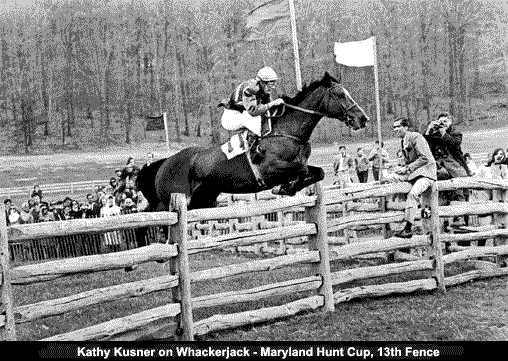
Campers on their first day receive a book, “Happy Horsemanship,” written by…the horse! They are also given a camera so they can take home pictures of their horse camp experience. They learn how to groom, tack up, and the fundamentals of riding, and the pure delight on their faces brings the organization’s motto―to teach and bring joy―to life.
“Horses in the Hood,” was created in response to experiences Kathy had in the schools she attended in segregated Virginia.
She hated it. “I loved the grooms at the horse shows, they were my favourite people. But when we went to horse shows, they weren’t allowed to go into restaurants sometimes even to take out. A white person had to go in to buy food and bring it out to them.”
She thought to herself, “If there is any way I can say ‘I’m sorry’ to the black community who were treated that way at that time then I’m going to do it.”
When she moved to California, and was no longer competing on the circuit, she got her opportunity, and Horses in the Hood (which welcomes all people) was born.
While Kathy has won innumerable titles and awards, and accomplished many firsts, there is one moment in her life that stands out above the others: attending Barack Obama’s inauguration. That day, that occasion, she says, “was magical.”
Kathy’s life has been one of passionately pursuing her goals and dreams. “Horses have been huge in my life. I love them.”






